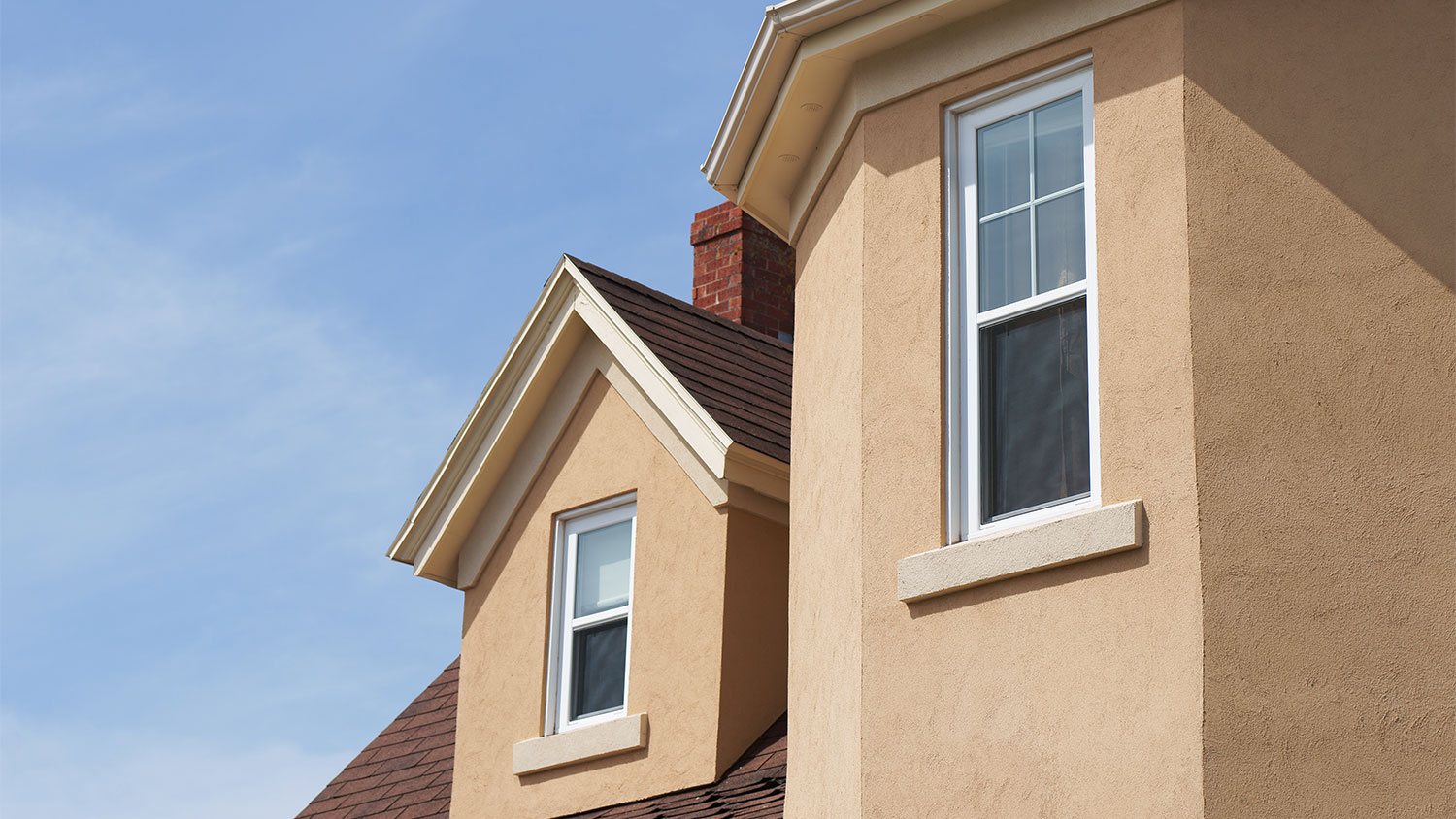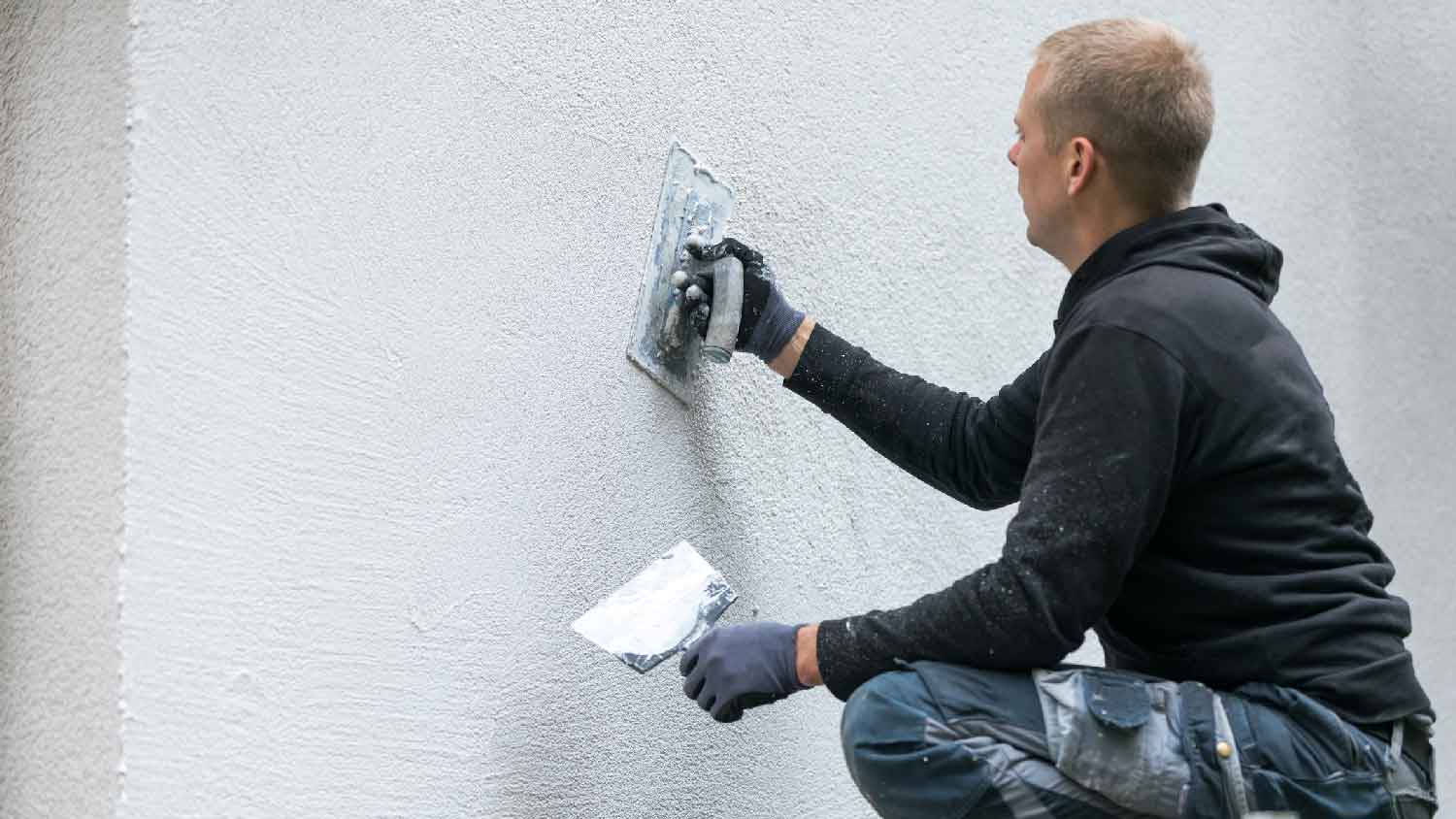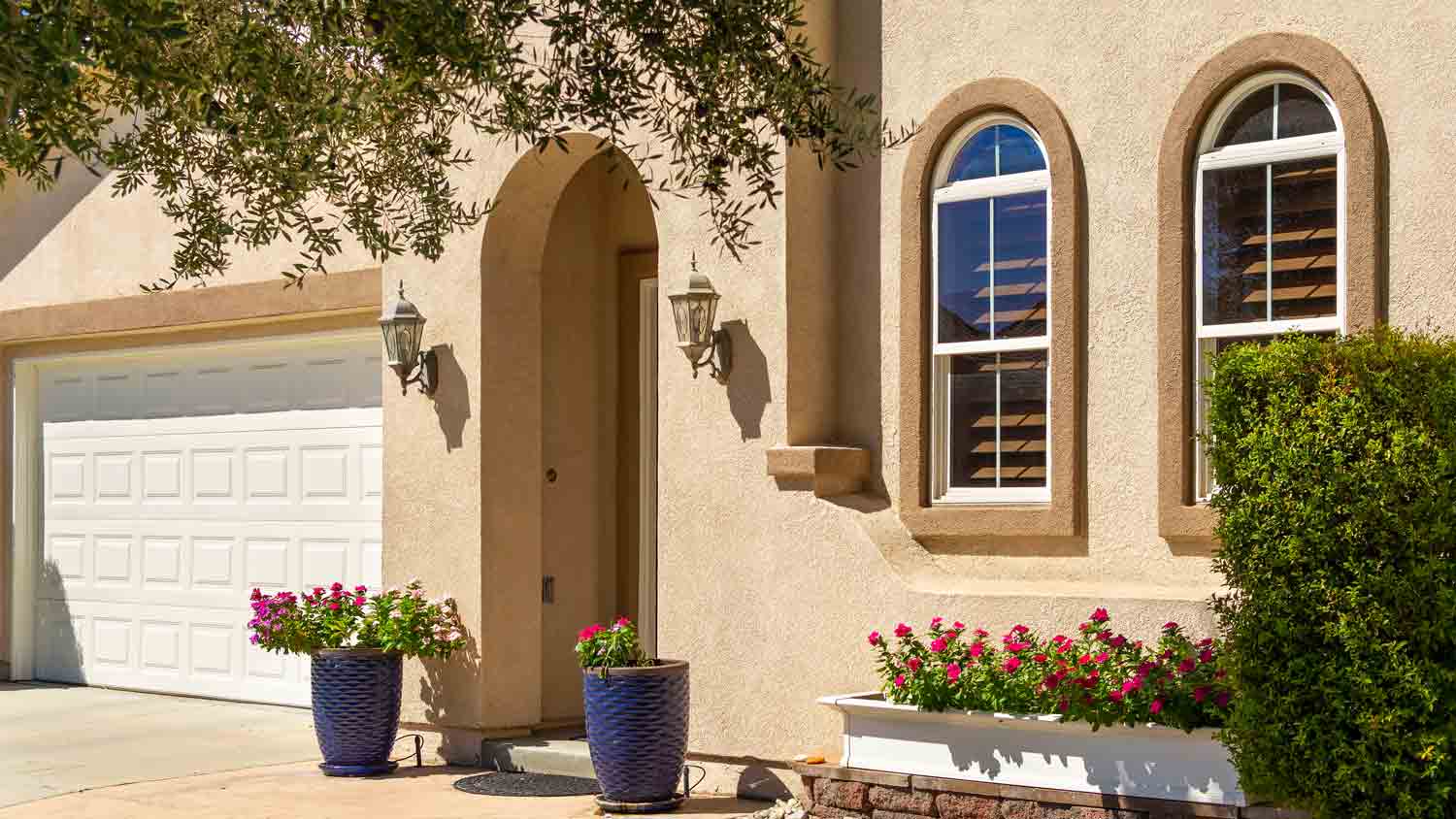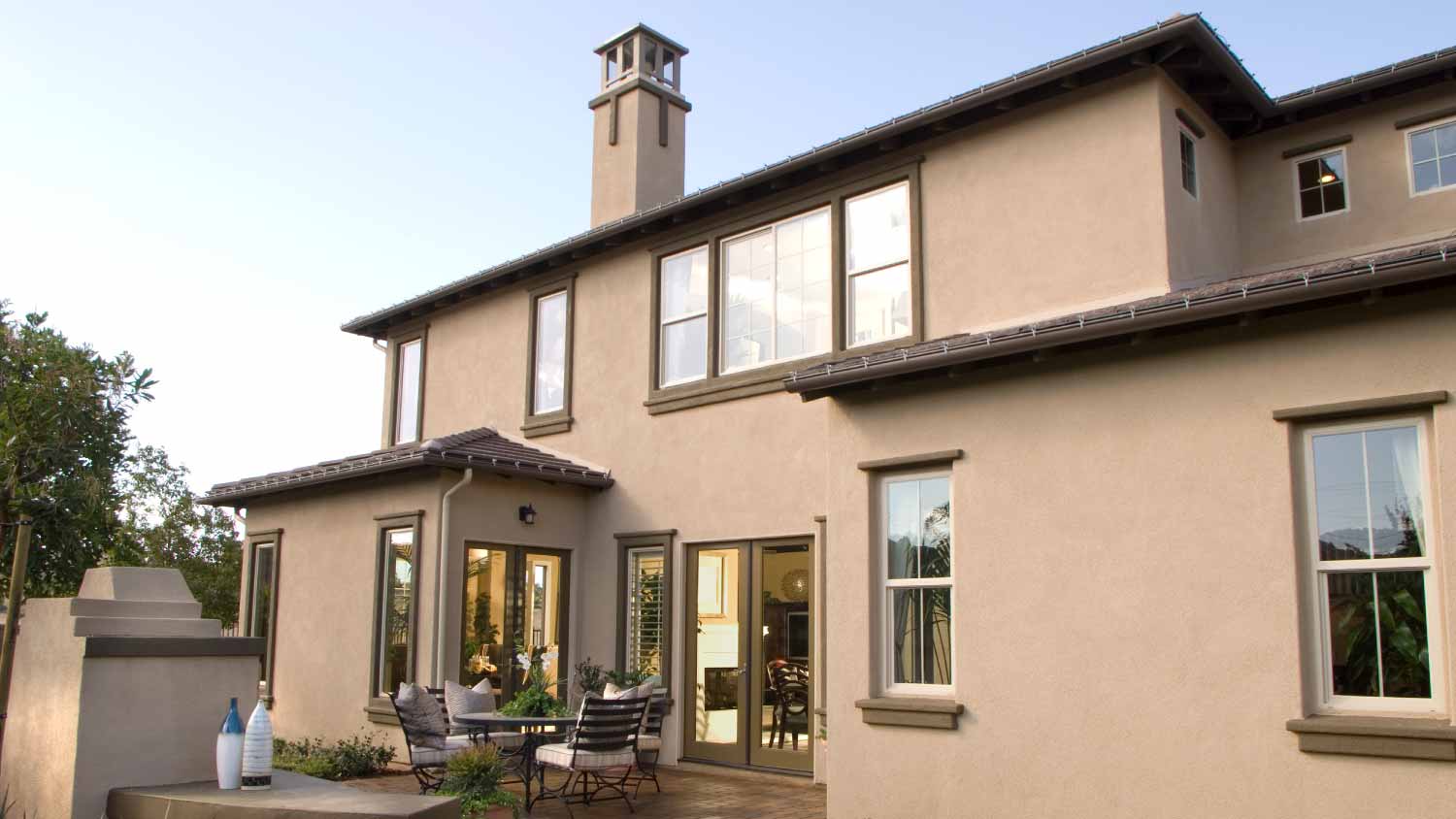
Discover the cost to stucco a house in 2025, including average prices, key factors, and tips to help you budget and plan your stucco project with confidence.
Take a look at what makes stucco and plaster different


Stucco is considered more durable than plaster.
Plaster can be placed in molds for custom designs.
Stucco is rougher in texture, whereas plaster is smoother.
While stucco is commonly used for home exteriors, plaster is an indoor material. However, both can technically be used indoors and outdoors.
Stucco is slightly more expensive than plaster.
Are you considering stucco or plaster? Both building materials offer plenty of benefits. In fact, many people who love classic and vintage homes will only consider these options for walls and siding due to the upscale aesthetics they bring to a property.
But stucco and plaster aren't necessarily interchangeable just because they have a similar look. Take a peek at how plaster and stucco compare so you can choose the best materials for your siding and walls.

Stucco and plaster are made of similar components—cement, sand, and water—but stucco uses lime-based materials and plaster uses gypsum-based materials. Plaster is softer than stucco and is most often used for interior surfaces, while stucco is harder and normally used for exteriors.
Stucco is made of cement, sand, and lime-based materials. Fiberglass is sometimes added to make stucco more rigid for certain applications. Generally, stucco is used for outdoor surfaces, but some homeowners make the stylistic choice to bring stucco inside. Stucco is a fire-resistant material, making it a good choice for areas prone to wildfires.

| Pros | Cons |
|---|---|
| Durable | Prone to moisture problems |
| Long-lasting | Less insulating |
| Wide range of colors and textures | Susceptible to chips and cracks |
Best for: Exterior surfaces
When applied correctly, stucco is a long-lasting, durable siding material that can protect your home for 50 years or more. It’s available in various types of stucco finishes and colors, so you can customize the look of your home’s exterior. It’s also relatively low-maintenance, requiring basic cleaning only once or twice a year.
Because stucco is porous, it’s susceptible to moisture problems, including mold growth. It’s prone to cracking, and you may need to worry about some stucco cracks, as they can lead to damage to your home’s exterior walls. It doesn’t insulate as well as other siding materials, so it may not be the best choice in colder climates.
Plaster is composed of cement, sand, and gypsum that is used for coating walls and ceilings. It is most suitable for indoor use and may be used for parging, or giving concrete a more finished appearance. Plaster can be molded into decorative elements and helps give an upscale finish to your home’s interior.

| Pros | Cons |
|---|---|
| Stronger than drywall | Soft, delicate finish |
| Good insulator | Prone to cracking and water damage |
| Blocks noise | Difficult to nail or drill through |
Best for: Interior surfaces
When used on interior surfaces, plaster is a durable material with higher tensile strength than drywall. It also acts as a good insulator, keeping utility costs low and preventing heat or cooling loss. Its thicker consistency also blocks noise better than drywall, adding additional privacy between rooms.
Plaster, while strong, is also soft, so its surface may get easily damaged. It’s also prone to cracking and moisture damage, which can lead to mold growth. Its thicker composition means nailing or drilling through plaster is much more difficult than with drywall, so it may take extra work to hang things on plaster walls.
When you’re building your dream home, watching the walls come up is a magical moment. But you need to make sure you pick the best material that will stand the test of time. See how stucco and plaster stack up when weighing all the important points of choosing a building material.
Plaster is more versatile than stucco because you can actually use plaster molds to create custom designs. Stucco options are more limited. In addition, stucco has a rough look. Siding contractors near you can provide information regarding the level of customization available for both options.
Stucco's rougher texture makes it more durable than plaster. Stucco should last for 50 years as long as you're maintaining stucco siding properly. Plaster's lifespan is a bit of a wildcard. Most estimates put the lifespan of a plaster wall somewhere between 30 and 70 years.
Stucco costs $8 per square foot on average. The cost of plastering walls is typically between $2 and $10 per square foot. Factors like quality, color, and custom touches can all impact the final cost of any plaster or stucco project.
The truth is that both stucco and plaster are considered appropriate for indoor/outdoor application. However, stucco generally performs better outdoors than plaster. The delicate nature of plaster can make it a poor choice for an area of the home exposed to the elements.
Both stucco and plaster use natural ingredients without the need for things like synthetic ingredients or unsustainable sourcing. As a result, they are considered "greener" than wood, vinyl, and similar options.
New stucco siding will increase your home’s resale value more than interior plaster, although both are considered premium finishes and may be appealing to prospective buyers. Stucco’s long lifespan is a definite plus when it comes to resale value—the siding may last longer than you own your house.
The steps for installing stucco or plaster can be very similar on the surface. Both processes involve buying or mixing a substance, applying it using a trowel, and accounting for curing and drying times.
The main differences between installing plaster vs. stucco are:
Material base: Stucco is made out of Portland cement, while plaster is made out of gypsum.
Drying and curing time: Stucco takes up to 90 days to dry, whereas plaster takes one to two weeks.
Number of coats: Stucco usually needs at least two (and sometimes up to three) coats, while plaster is usually done in two coats.
If you’re installing either of these materials yourself, you’ll need to have basic masonry skills and feel comfortable working quickly before they dry. Improper installation can result in costly repairs down the road, especially if water trapped in the plaster or stucco starts to grow mold. Once mold begins to appear, you’ll need to completely remove your surface, clean the area, and start over again (and depending on the severity of the mold, hire a mold abatement contractor).
If you’re not fully confident in your masonry abilities, hire a pro who does stucco or plaster to ensure it’s applied correctly.
From average costs to expert advice, get all the answers you need to get your job done.

Discover the cost to stucco a house in 2025, including average prices, key factors, and tips to help you budget and plan your stucco project with confidence.

Discover the average stucco repair cost, key price factors, and ways to save. Get expert tips to budget your stucco repair project with confidence.

Get transparent stucco inspection cost info. Learn what impacts price, how to save, and what to expect before hiring a pro for your stucco inspection.

Stucco is a popular siding known for its durability, curb appeal, and long lifespan, but how long does stucco last? Here’s everything you need to know.

Installing new stucco gives your home a facelift and boosts home value. But can you stucco over stucco? You can, but there are some things to consider.

Choose the right pro for stucco installation to get the best professional-quality results. Learn who does stucco installation and the benefits of hiring a pro.